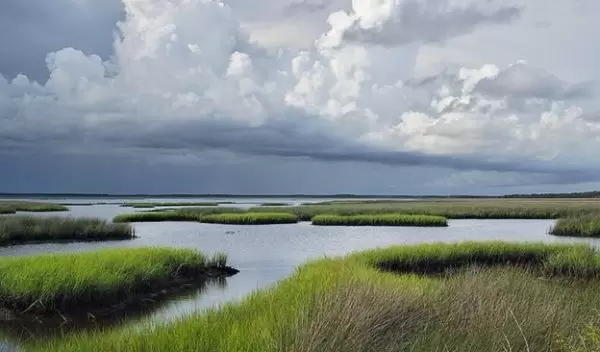
How marsh grass protects shorelines
Marsh grasses, which are ubiquitous along the world's shorelines, can play a major role in mitigating the damage to coastlines as sea levels rise and storm surges increase. Now, a new MIT study provides greater detail about how these protective benefits work under real-world conditions shaped by waves and currents.
The U.S. National Science Foundation-supported study combined laboratory experiments using simulated plants in a large wave tank with mathematical modeling. The results appear in the journal Physical Review -- Fluids, in a paper by researchers Xiaoxia Zhang and Heidi Nepf.
"This project is a great example of how the outcomes of basic science research can inform climate adaptation in coastal areas," says Laura Lautz, a program director in NSF's Division of Earth Sciences. "The results guide how restoration efforts can be most effective in mitigating coastal flooding caused by sea level rise and severe storms."
Coastal marsh plants provide significant protection from surges and devastating storms. For example, it's estimated that the damage caused by Hurricane Sandy was reduced by $625 million thanks to the damping of wave energy by extensive areas of marsh along the affected coasts. The new analysis incorporates details of plant morphology, such as the number and spacing of flexible leaves versus stiffer stems, and the complex interactions of currents and waves that may be coming from different directions.
That level of detail could enable coastal restoration planners to determine the area of marsh needed to mitigate expected amounts of storm surge or sea level rise, and to decide which types of plants to introduce to maximize protection.
"When you go to a marsh, you often will see that the plants are arranged in zones," says Nepf. "Along the edge, you tend to have plants that are more flexible, because they are using their flexibility to reduce wave forces. In the next zone, the plants are a little more rigid and have a bit more leaves."
As the zones progress, the plants become stiffer, leafier and more effective at absorbing wave energy, thanks to their greater leaf area. The new modeling allows coastal planners to take these details into account when planning protection, mitigation or restoration projects.


